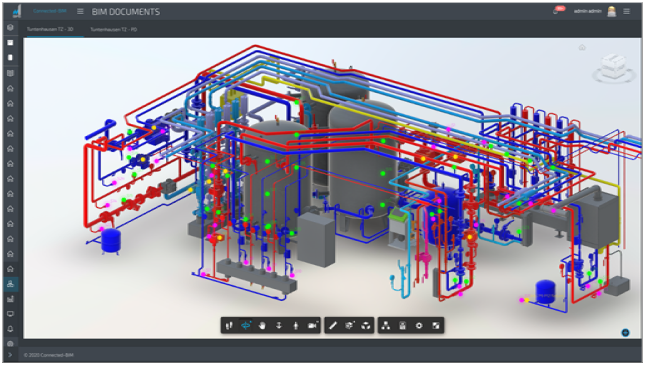FMTech Insights: Cut Energy Costs & Optimize Operations with Big Data & IoT

FMTech Insights is a series where subject matter experts and thought leaders in FMTech share their knowledge and opinions on the topic of their expertise; helping the industry learn, innovate and grow. The series will cover every sector in FM – from workplace management, operations and maintenance, energy management, waste management and everything in between.
Christine Brukhty is the Business Development & Marketing Manager at HiPer IT, a family of big data and IoT PropTech democratizing optimization of Facility Management. It's HiPerWare enables achieving current business goals in FM such as energy consumption and CO2 emission reduction with simple to install, implement and use platform, HVAC systems detailed digital trail for ESG reporting, subcontractor services assessment and retrofit investment analysis, simplification and unification of field services through creation of real time digital twin and many more.
FMTech Insights: Cut Energy Costs & Optimize Operations with Big Data & IoT
The key to efficient building operations is informed decision-making.
Reducing energy consumption and avoiding unplanned HVAC systems downtime while providing high quality tenant services has recently become a key priority for facility management. Most systems in buildings do not simply quit working; they may begin to use more energy than expected or show abnormal behavior. This is a common indicator of a potential malfunction in any HVAC unit and recognizing this problem with big data collection and IoT can prevent the system from complete failure. If a heating system is ailing and pressure drops suddenly and unexpectedly, tenants will not have hot water or heating; this has a significant impact on property and facility management as there will be a high level of discontent, often leading to rent reduction demands or compensation claims. If sensors are installed on the system, collecting real-time big data (1x per second), machine learning algorithms can detect which parts show an anomaly and the FM will know much in advance what the problem is and how to fix it. Instead of replacing the heating system, FM is using conditional maintenance to control the situation and avoid downtime.
Building operators can use IoT data for real-time analysis and optimization via the digital twin and dashboards to have an overview of the building’s well-being at any given time, from anywhere.
The digital twin, the animated virtual replica of the building - senses all the physical processes that take place in real-time. The digital twin is equipped with artificial intelligence and can remember, understand, analyze, and optimize processes.

The live information from the sensors is synchronized with the building model in a cloud. The collected and clearly structured Big Data (we are talking about millions of variable values) is ready for processing by AI and machine learning algorithms and forms the basis for a self-learning neural network.
The integration of a digital twin that is fully synchronized with the physical building helps analyze the physical processes and their interrelationships with other processes, to recognize cause-effect relationships, higher-level and lower-level processes, and time-related dependencies.
A BIM model and 360 photos make it easy to see what equipment needs attention, where it is located, and how it is configured. This integration allows service personnel to easily and intuitively navigate to the device that needs maintenance and quickly access all the information required for maintenance.
By accumulating knowledge about the problems and how to solve them, we form a technical library. It contains operational patterns - a digital model of the "normal behavior" of any system asset, including a model of high-efficiency energy consumption instead of the parameter monitoring in a BMS (Building Management System) that is common today. When a deviation occurs, the platform automatically sends a notification to CAFM (Computer Aided Facility Management) /BPM (Business Process Management) service request queue.
Here is a real-life example: malfunction one of three compressors in a temperature-controlled warehouse in a logistic center.

The analysis of power consumption patterns has revealed that improper functioning of one of the compressors has led to inconsistent operation of the entire system (mismatch of compressor control automation), which was confirmed by frequent short-term shutdowns of the equipment, lasting no more than 1-3 minutes.
Unnecessarily switching on and off compressors and the associated inrush currents increase the load on the entire power system and can lead to premature failure of expensive compressor equipment. A comprehensive analysis was carried out, and the settings of the automation system were corrected and optimized leading to reduction in energy cost by 12% and maintenance costs.
To offer our facility management customers a perfect solution HiPer IT, a BPS Group company. developed the HiPerWare® platform, based on industrial IoT, Big Data, ML/AI (Machine Learning / Artificial Intelligence) and BIM (Building Information Modelling) technologies.
If you are intrigued and would like to see the HiPerWare® live at work, please contact Christine Brukhty - [email protected] or +49 89 201 751 23
Disclaimer: the opinion of the author does not necessarily reflect that of the Global Alliance of Facility Management Innovators.

